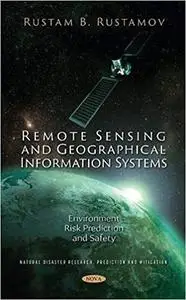Remote Sensing and Geographical Information Systems: Environment Risk Prediction and Safety
by Rustamov, Rustam B.;
English | 2021 | ISBN: 1536197262 | 257 pages | True PDF | 6.68 MB
by Rustamov, Rustam B.;
English | 2021 | ISBN: 1536197262 | 257 pages | True PDF | 6.68 MB
The success of natural disaster study depends on updated, accurate, and exact information. This information should be collected and arranged logically to enable appropriate authorities of all levels, such as state officials and urban planners, to address crises before, during, and after the event. Modern technologies, including remote sensing methods and geographic information systems, enable the collection of information that satisfies the requirements of natural disaster studies. Computer systems provide for the collecting, saving, retrieving, processing, and analyzing of data, and can produce visual outputs such as tables and graphs. Such systems also give authorities access to information like routes to damaged areas, health care stations, police, firefighters, auxiliary forces, possible landing spots for helicopters and airplanes, places for reserving food and rescue devices, and urban infrastructure as well as addresses, phone numbers, and email addresses of residents or communication facilities. Remote sensing and geographic information system development can integrate all this information by organizing it into layers and creating maps in both digital and physical formats. Data represented by geographic information systems are linked to geographical coordinate systems, enabling ease of access. Such resources are critical for analyzing, comparing, and fully understanding crises. The archival of previously processed information opens opportunities for decision makers to solve problems more effectively. These are the main concepts explored in this book.



